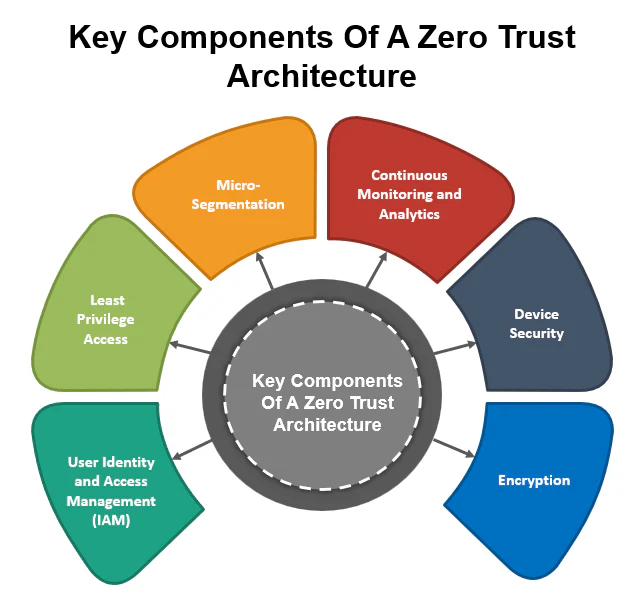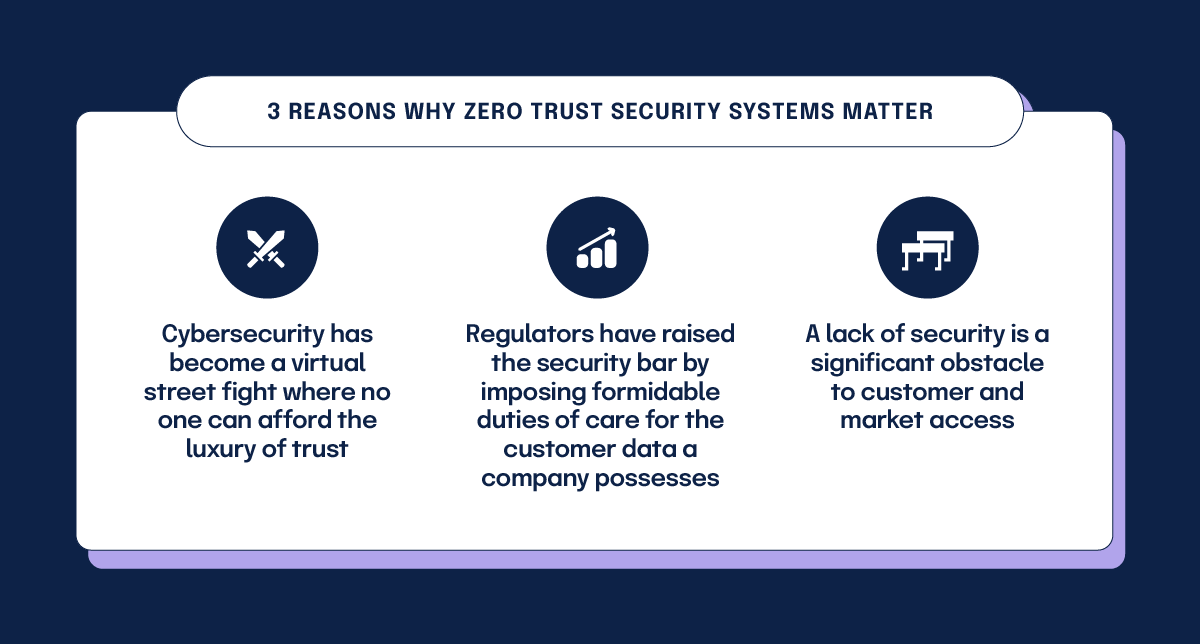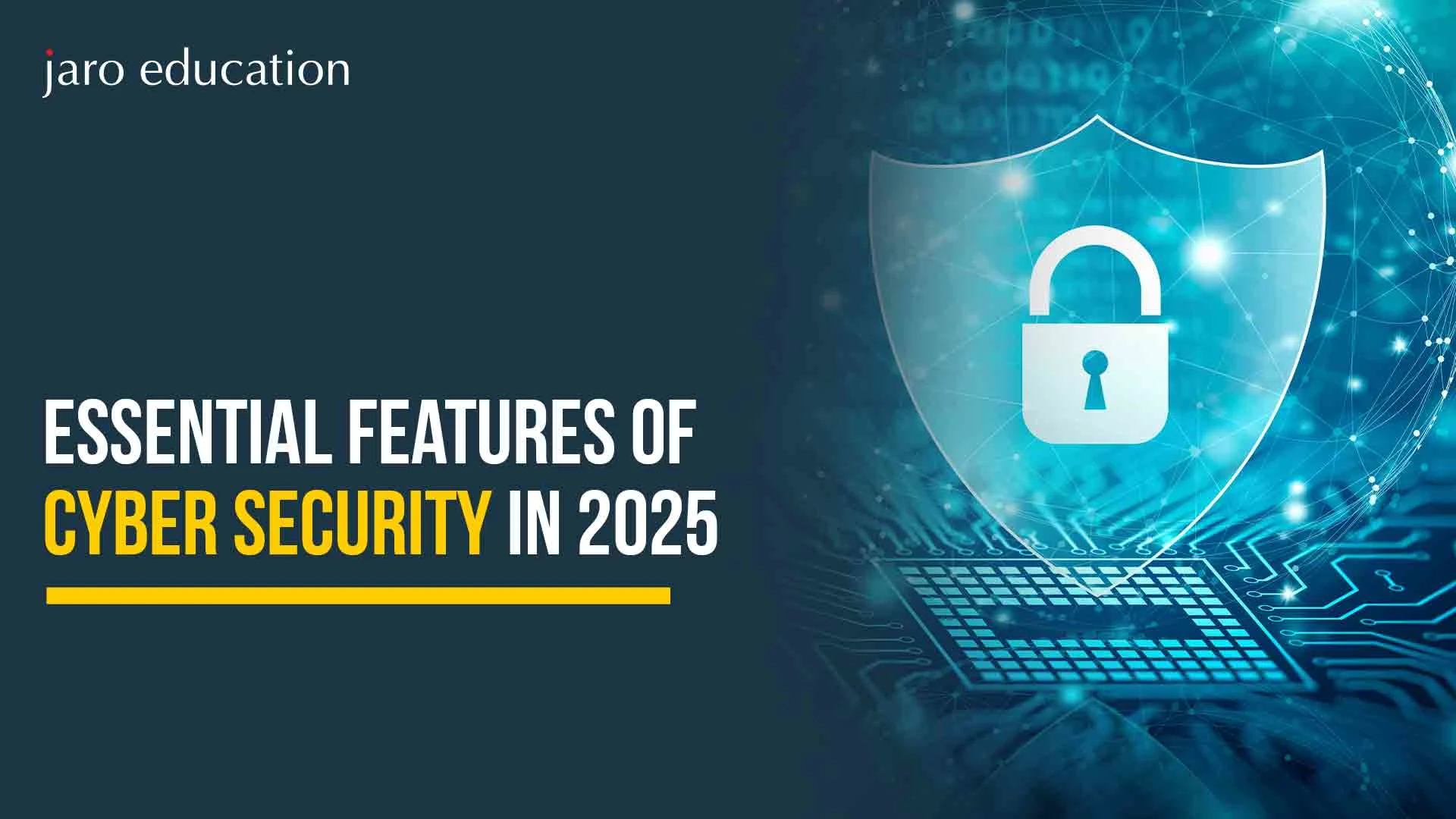What Is the Zero Trust Security Model & Why Is It Important?
Table of Contents

Imagine this: you’re in a packed, noisy city. Would you leave your apartment door wide open, trusting everyone walking past to have good intentions? Of course not.
That’s basically what happens when organizations grant broad digital access just because someone logs in from a familiar location or uses known credentials. But it’s risky, like inviting trouble.
This is where the Zero Trust security model flips the script. The entire idea rests on one basic rule: “Never trust and always verify.”
Sounds intense? Looking at the current digital world scenario, it’s kind of necessary.
So what does that mean in real terms, for professionals and the organizations they work with? Let’s find out.
Understanding Zero Trust Security
These days, attackers no longer rely on brute force. They’re exploiting subtle cracks in systems. That’s why the Zero Trust security model doesn’t take anything at face value. It challenges the old “once you’re in, you’re safe” logic and replaces it with constant verification.
Here’s how it works:
The Core Principle
Zero Trust security is about cutting out assumptions. It doesn’t matter if a user is connecting from inside the company network or halfway across the world; they still need to prove who they are every single time. No shortcuts. No free passes.
This significantly reduces the chances of someone slipping through the cracks and causing harm.
Why Traditional Models Don’t Hold Up Anymore
The old approach to cybersecurity focused on keeping threats outside a well-defined perimeter. Once someone got in, they could often move around freely.
But its digital first world now and things have changed a lot. With cloud services, mobile access, and remote work, that clear perimeter doesn’t exist anymore. It’s full of gaps and loopholes. And once an attacker finds one weakness, they can bounce around the system unnoticed.
Zero Trust doesn’t let that happen. Every action, every access point, every user, they’re all treated like potential threats until proven otherwise. Impressive, isn’t it?
Key Components of Zero Trust Architecture

*itsm-docs.com
Zero Trust architecture isn’t just one tool or app you install. It’s a full-blown framework. If you’re thinking of applying it or are just curious, here’s what it usually involves:
1. Strong Identity & Device Verification
Authentication isn’t just about usernames and passwords anymore. It includes device trust, biometric checks, and contextual signals like location or time of access. The idea is to build confidence in the who and what behind every login.
2. Principle of Least Privilege
Users and systems only get the access they absolutely need—nothing more. But here’s the kicker: access isn’t set in stone. It should be revisited often, especially after role changes or system upgrades.
3. Micro-Segmentation with Smart Policies
Think of this like zoning laws for your data. Different parts of the network are separated with security rules tailored to each one. Even if an attacker breaks in, they’re boxed into a corner rather than roaming free.
4. Behavior-Based Monitoring
Go beyond simple tracking. Behavioral analytics uses Artificial Intelligence to learn what “normal” looks like and flag unusual actions—like a finance employee suddenly accessing engineering files. It’s real-time risk detection.
5. Context-Aware Access with ZTNA
Zero Trust Network Access (ZTNA) replaces clunky VPNs with precision. It grants access to only the necessary applications, based on real-time user context—not just login credentials.
Why Zero Trust Security Matters

*hyperproof.io
So now that we’ve gone through the basics, here is your answer to why any of this should matter. What makes Zero Trust security such a big deal in today’s security landscape?
- Threats Evolve Faster Than Tools
Ransomware, supply chain attacks, and AI-generated phishing campaigns are becoming more complex. Zero Trust gives organizations the flexibility to adapt instead of just reacting. - Hybrid Work Isn’t Temporary
Whether someone’s in an office, at home, or on a train, security must be the same. Zero Trust security brings consistency without sacrificing user experience. - Reputation is on the Line
One breach can tank customer trust overnight. Zero Trust security helps businesses build digital credibility by showing that protecting data isn’t optional—it’s strategic.
How to Implement Zero Trust Security: Step-by-Step
If you are thinking the theory above is fine, but how to actually roll out Zero Trust security? Well, it’s not something you flip on overnight. It takes planning. Here’s a basic roadmap to help you get started:
Step 1: Evaluate What You’ve Got
First and foremost, start by reviewing your current infrastructure. How do people access data? Where are the weak points? Are there any parts of the system running purely on trust? That’s where you begin.
Step 2: Identify What Needs Protecting
Not everything is equally sensitive. Highlight your key data, critical apps, and important systems. These are your “protected surfaces” that need the most attention.
Step 3: Strengthen Authentication
Most crucial factors make multi-factor authentication mandatory, and it is being highlighted often due to a reason. Every user, every device, no exceptions. It’s one of the fastest ways to raise your defence level.
Step 4: Limit Access
Review who has access to what. Tighten up permissions so users only get what they need to do their job. Nothing more.
Step 5: Watch and React
Install tools that track user behavior in real time. Spotting odd activity early means you can take action before things get worse.
Scenario-Based Zero Trust Security Decision Framework
Here is a quick visual table reference about Zero Trust security implementation:
Scenario | Zero Trust Security Response Path | Outcome / Security Benefit |
Login attempt from the unfamiliar location at an odd hour | 1. Trigger adaptive MFA | Blocks suspicious access, reduces credential misuse |
The user tries accessing data outside their role scope | 1. Apply least privilege access | Prevents lateral movement inside the network |
Contractor accessing internal systems remotely | 1. Verify identity and device | Secures third-party access with visibility control |
A compromised account shows abnormal file downloads | 1. Detect via behavioral analytics | Stops data exfiltration, reduces breach impact |
Employee switches roles internally | 1. Revalidate access permissions | Prevents privilege creep and outdated access rights |
Each scenario highlights critical gaps or opportunities within a security model, helping you better evaluate effectiveness and identify areas that need strengthening.
Build Cybersecurity Expertise: Zero Trust Courses Offered by India’s Best Online Platform
If you are looking to build a strong foundation in cybersecurity with a focus on Zero Trust security principles, Jaro Education, India’s leading online education platform, offers several programs designed to equip you with the latest strategies and practical skills.
Below is a quick overview of courses where Zero Trust security principles are built into the core curriculum, either directly or as a critical component of broader cybersecurity strategy.
Course Name | University / Partner Institution | Duration | Mode | Key Highlights |
Executive Programme in AI and Cyber Security for Organizations (EPAI&CSO) | IIM Indore | 10 months | Online + Immersion | Focus on AI fundamentals, cybersecurity, leadership skills; Designed for non-technical professionals |
IIM Nagpur | 12 months | D2D | Emphasizes communication, leadership, strategy, team management, and governance, ensuring a comprehensive understanding of cybersecurity in today’s rapidly evolving landscape. |
Visit our website to learn more about these courses!
Final Thought
To put it in short, digital threats aren’t slowing down. Relying on outdated models that assume trust just doesn’t cut it anymore.
Zero Trust security offers a smarter, more flexible way to secure data, apps, and systems. For professionals in the tech space, it’s a must-have skill set.
If you’re serious about staying ahead in cybersecurity, mastering Zero Trust Architecture and Zero Trust Network Access should be high on your list.
The future’s not about locking one big door; it’s about checking every key, every single time.
Frequently Asked Questions
What is the salary of a Zero Trust security professional?
Salary in the mid- to high-six-figure range is typical for a Zero Trust employee, depending on experience and location. As their skill are in demand, organizations have to pay them well to keep them!
Can I learn Zero Trust even if I do not have a tech degree?
Definitely! A tech degree is not needed to learn Zero Trust. As long as you have the right certifications and seasoned experience in hands-on learning, you can learn the theory of Zero Trust and operational carry it out. Experience and learning is the most important factors.
Is Zero Trust security relevant to business leaders?
Yes. It is important that today’s business leaders know what Zero Trust means so they can make informed decisions that protect their organization from cybersecurity risks threatening data, reputation, and business continuity. Security is no longer just a tech issue. Security is a business strategy.
Which industries benefit most from Zero Trust security?
Zero Trust security provides great advantages to sectors like finance, healthcare, government, and technology since these industries are dealing with sensitive data and often face ongoing cyber threats. Zero Trust is an imperative for their cybersecurity posture!
Recent Blogs
It seems we can't find what you're looking for.














